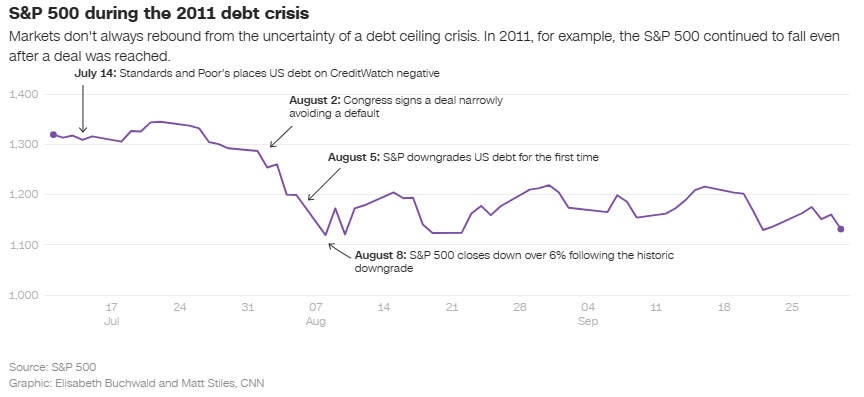In my recent discussions with my bankers, the topic of investing in Structured Notes and/or Corporate Bonds has emerged as an opportunity for diversification. Given my existing exposure to the direct equity market, I am exploring the potential of these two distinct investment instruments. However, it’s crucial to understand that Structured Notes and Corporate Bonds come with their own unique characteristics and considerations.

Here’s a simple comparison between the two:
Structured Notes:
- Structure: Structured notes combine a debt component (typically fixed income) with a derivative component. The derivative component links the performance of the note to an underlying asset or investment strategy.
- Customization: Structured notes offer customization options to tailor the risk-return profile based on investor preferences. They can include features like knock-outs, knock-ins, or other embedded options.
- Returns: Structured notes provide the potential for enhanced returns, downside protection, or exposure to specific investment strategies.
- Complexity: Structured notes can be complex financial instruments, requiring a deeper understanding of their terms, features, and potential risks.
- Risk and Reward: The risks and rewards associated with structured notes depend on the specific terms and underlying assets. There is potential for both gains and losses depending on the performance of the underlying asset or investment strategy.
Corporate Bonds:
- Structure: Corporate bonds are debt securities issued by corporations to raise capital. They represent a loan made by the investor to the issuing company, and the issuer promises to repay the principal amount with periodic interest payments.
- Fixed Income: Corporate bonds provide a fixed income stream through regular coupon payments based on the bond’s stated interest rate.
- Credit Risk: Investors are exposed to the credit risk of the issuing company. If the company faces financial difficulties or defaults, there is a risk of delayed or missed payments.
- Stability: Corporate bonds are typically considered less volatile than equity investments, offering relative stability and predictable cash flows.
- Market Liquidity: Corporate bonds are generally more liquid than structured notes, as they are often traded on established bond markets.
A few of my decision-making also relies hugely on the following for the next 12 months:
- Is the hype in AI stocks a boom or bubble?

Boom Scenario:
- Genuine Technological Advancements: AI has shown remarkable advancements in various fields, such as healthcare, finance, autonomous vehicles, and natural language processing. These advancements have the potential to transform industries, increase efficiency, and drive significant economic growth.
- Market Potential: The global AI market is projected to grow substantially in the coming years. AI technologies are being integrated into various products and services, creating new revenue streams for companies involved in AI research, development, and implementation.
- Investor Interest and Confidence: The increasing investor interest and confidence in AI stocks reflect the belief in the long-term potential of AI. Companies at the forefront of AI innovation are attracting substantial investments, indicating a genuine market demand and growth prospects.
Bubble Concerns:
- Overvaluation: Some argue that the valuations of certain AI stocks have become disconnected from their underlying fundamentals. High expectations and speculation may have inflated stock prices beyond their justified value.
- Uncertain Profitability: Despite the potential of AI technologies, profitability and widespread adoption are not guaranteed for all companies involved. It may take time for AI applications to mature, and not all investments may generate substantial returns in the short term.
- Market Sentiment and Speculation: A surge in AI-related stock prices may be driven, in part, by market sentiment, speculation, and the fear of missing out (FOMO). Such factors can contribute to price volatility and an unsustainable market environment.
Ultimately, whether the hype in AI stocks represents a boom or a bubble is subjective and influenced by individual perspectives, market dynamics, and the specific companies involved. Investors should carefully evaluate the underlying fundamentals, technological capabilities, competitive landscape, and long-term prospects of AI companies before making investment decisions. I’m still evaluating and have not come to a definitive conclusion yet.
- What is the possible market impact of post the debt ceiling deal?

Throwback Case Study – The 2011 debt ceiling crisis in the United States marked a significant moment of uncertainty and tension in the financial landscape. As the government faced the challenge of raising the debt ceiling to avoid a potential default on its financial obligations, the markets were on edge. The prolonged negotiations and political gridlock surrounding the issue created a climate of unease and heightened volatility. Stock markets experienced sharp declines as investors grappled with the potential consequences of a U.S. default. The S&P 500 index, a key benchmark, faced significant downward pressure, reflecting the growing fears and uncertainty. Ultimately, a resolution was reached, and the debt ceiling was raised, providing temporary relief to the markets. However, the crisis left an indelible mark on investor sentiment and highlighted the inherent risks associated with political brinkmanship over critical fiscal matters. Standard & Poor’s downgraded US debt for the first time in history. It took two months for stocks to recover the losses resulting from the downgrade and the initial sell-off leading up to the so-called X-date, when the government no longer has the ability to meet all its financial obligations.
Additionally, it’s important to acknowledge that numerous debt ceiling debates have occurred since 2011, often accompanied by similar levels of concern but with less significant impact on the market in the end. However, it is worth noting that the debt ceiling risk may still have an influence on markets in 2023, and it is not guaranteed that a less significant impact on the market will be happen this time.
In conclusion, the decision to invest in Structured Notes or Corporate Bonds should be carefully considered based on individual investment objectives, risk tolerance, and understanding of each instrument’s unique characteristics. Structured Notes offer customization and potential for enhanced returns but come with increased complexity and risks. On the other hand, Corporate Bonds provide stability, fixed income, and relatively lower risk. However, it is essential to conduct thorough research, assess the terms and underlying assets, and consider the potential rewards and risks associated with each option. By diversifying one’s investment portfolio and making informed decisions, investors can strive to achieve their financial goals while managing risk effectively.
Disclaimer: The information provided on this blog is for general informational purposes only. All information on the blog is provided in good faith, however we make no representation or warranty of any kind, express or implied, regarding the accuracy, adequacy, validity, reliability, availability, or completeness of any information on the blog. Under no circumstance shall we have any liability to you for any loss or damage of any kind incurred as a result of the use of the blog or reliance on any information provided on the blog. Your use of the blog and your reliance on any information on the blog is solely at your own risk.
Please note that the information and opinions expressed on this blog are solely those of the author(s) and do not necessarily reflect the views or opinions of any organization, employer, or affiliated individuals. The content on this blog is not intended to be a substitute for professional advice, diagnosis, or treatment. Always seek the advice of your physician, lawyer, or other qualified professional with any questions you may have regarding a specific situation.
We reserve the right to make additions, deletions, or modifications to the content on this blog at any time without prior notice. We do not guarantee that the blog will be available at all times or that the content on the blog will be free from errors or omissions.
By using this blog, you acknowledge and agree to the terms of this disclaimer.
